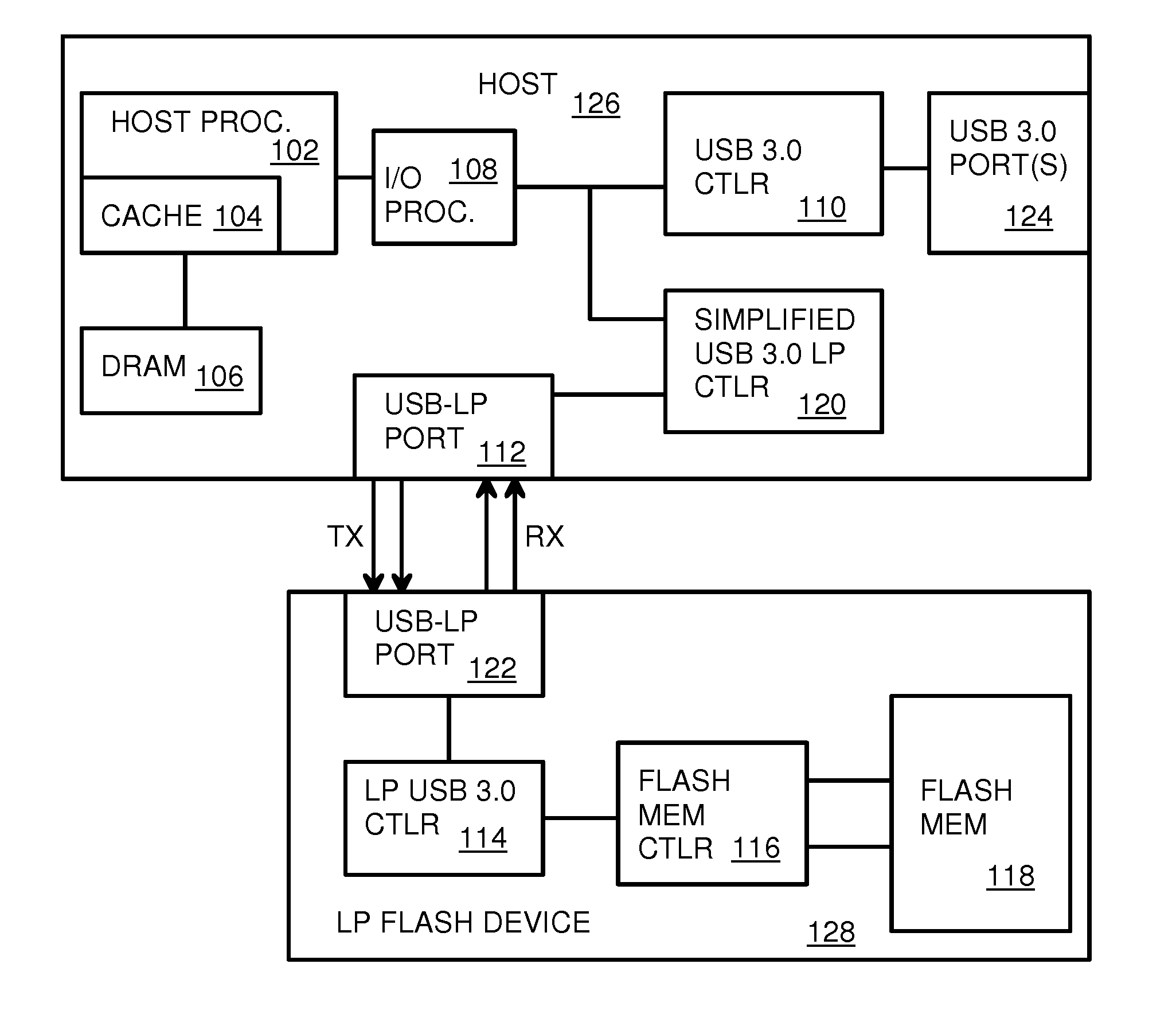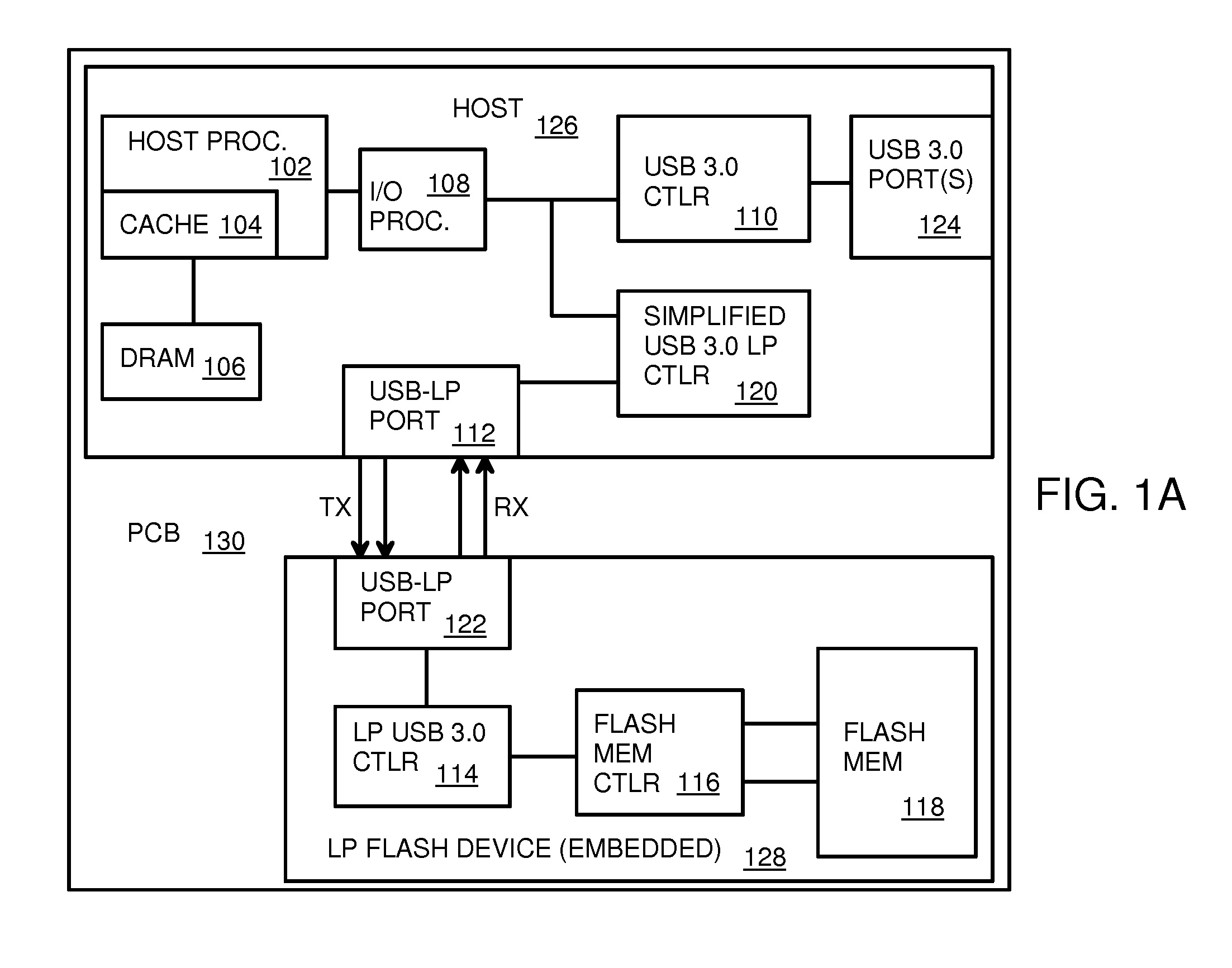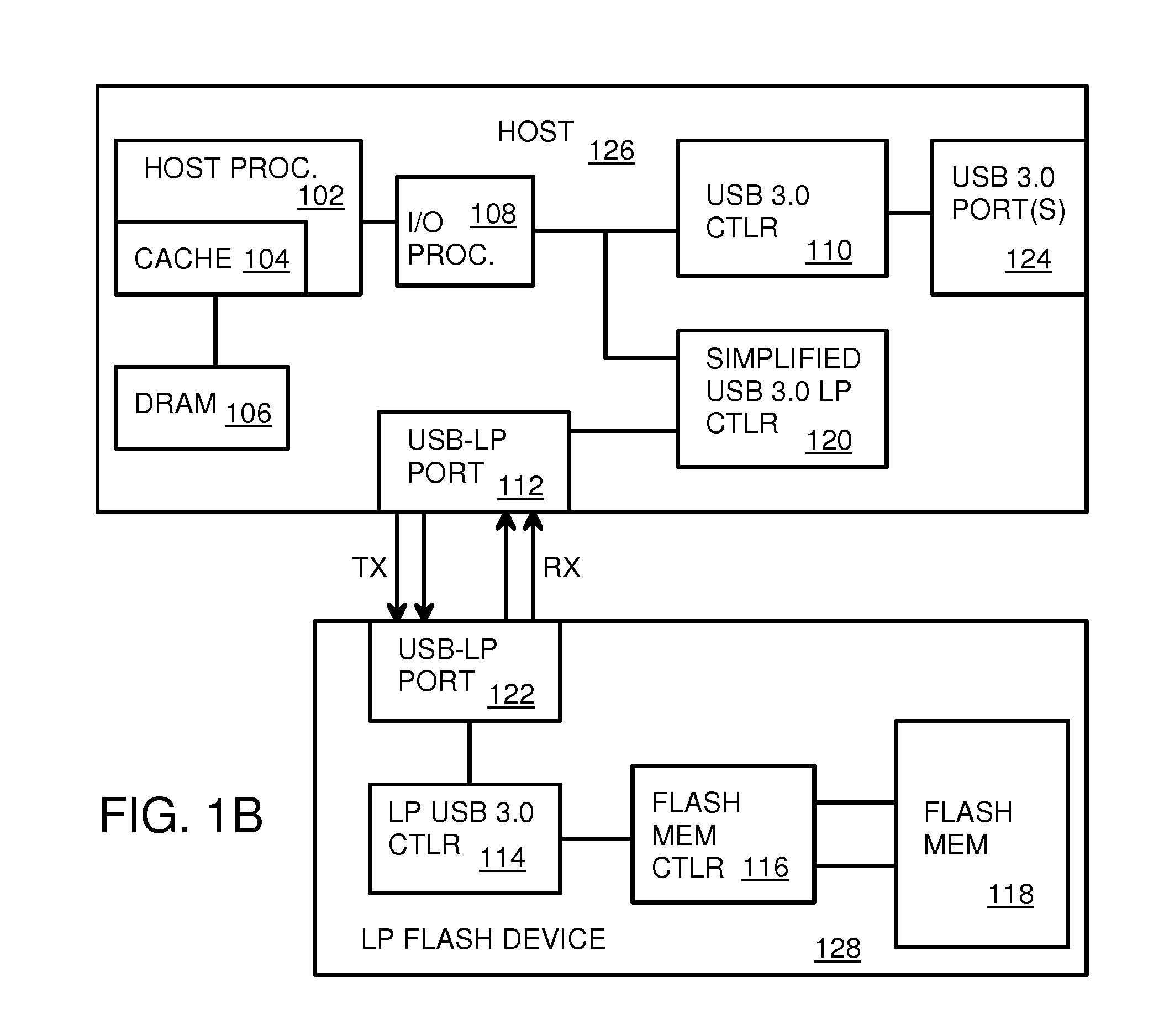Low-Power USB SuperSpeed Device with 8-bit Payload and 9-bit Frame NRZI Encoding for Replacing 8/10-bit Encoding
a super-speed, low-power technology, applied in the field of low-power universal serialbus (usb) systems, can solve the problems of -memory devices that are already limited in transfer speed, power consumption may be more important than speed, and very power sensitive peripherals
- Summary
- Abstract
- Description
- Claims
- Application Information
AI Technical Summary
Problems solved by technology
Method used
Image
Examples
Embodiment Construction
[0046]The present invention relates to an improvement in low-power USB systems. The following description is presented to enable one of ordinary skill in the art to make and use the invention as provided in the context of a particular application and its requirements. Various modifications to the preferred embodiment will be apparent to those with skill in the art, and the general principles defined herein may be applied to other embodiments. Therefore, the present invention is not intended to be limited to the particular embodiments shown and described, but is to be accorded the widest scope consistent with the principles and novel features herein disclosed.
[0047]FIG. 1A is a block diagram of an embedded low-power flash device. Host 126 and low-power flash device 128 are both integrated onto the same PCB 130, such as a motherboard or other circuit board. Host 126 has host processor 102 with cache memory 104 that read data and instructions from dynamic-random-access memory (DRAM) 10...
PUM
 Login to View More
Login to View More Abstract
Description
Claims
Application Information
 Login to View More
Login to View More - R&D
- Intellectual Property
- Life Sciences
- Materials
- Tech Scout
- Unparalleled Data Quality
- Higher Quality Content
- 60% Fewer Hallucinations
Browse by: Latest US Patents, China's latest patents, Technical Efficacy Thesaurus, Application Domain, Technology Topic, Popular Technical Reports.
© 2025 PatSnap. All rights reserved.Legal|Privacy policy|Modern Slavery Act Transparency Statement|Sitemap|About US| Contact US: help@patsnap.com



